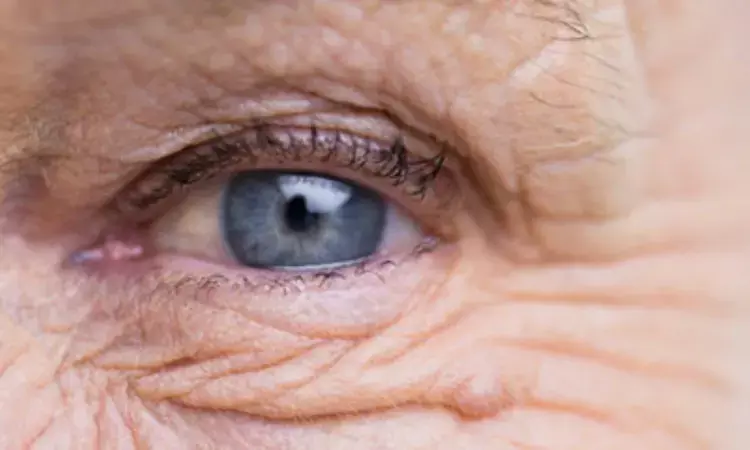- Home
- Medical news & Guidelines
- Anesthesiology
- Cardiology and CTVS
- Critical Care
- Dentistry
- Dermatology
- Diabetes and Endocrinology
- ENT
- Gastroenterology
- Medicine
- Nephrology
- Neurology
- Obstretics-Gynaecology
- Oncology
- Ophthalmology
- Orthopaedics
- Pediatrics-Neonatology
- Psychiatry
- Pulmonology
- Radiology
- Surgery
- Urology
- Laboratory Medicine
- Diet
- Nursing
- Paramedical
- Physiotherapy
- Health news
- Fact Check
- Bone Health Fact Check
- Brain Health Fact Check
- Cancer Related Fact Check
- Child Care Fact Check
- Dental and oral health fact check
- Diabetes and metabolic health fact check
- Diet and Nutrition Fact Check
- Eye and ENT Care Fact Check
- Fitness fact check
- Gut health fact check
- Heart health fact check
- Kidney health fact check
- Medical education fact check
- Men's health fact check
- Respiratory fact check
- Skin and hair care fact check
- Vaccine and Immunization fact check
- Women's health fact check
- AYUSH
- State News
- Andaman and Nicobar Islands
- Andhra Pradesh
- Arunachal Pradesh
- Assam
- Bihar
- Chandigarh
- Chattisgarh
- Dadra and Nagar Haveli
- Daman and Diu
- Delhi
- Goa
- Gujarat
- Haryana
- Himachal Pradesh
- Jammu & Kashmir
- Jharkhand
- Karnataka
- Kerala
- Ladakh
- Lakshadweep
- Madhya Pradesh
- Maharashtra
- Manipur
- Meghalaya
- Mizoram
- Nagaland
- Odisha
- Puducherry
- Punjab
- Rajasthan
- Sikkim
- Tamil Nadu
- Telangana
- Tripura
- Uttar Pradesh
- Uttrakhand
- West Bengal
- Medical Education
- Industry
Patients on treatment for sleep apnea at increased risk of AMD with reticular pseudodrusen

Researchers have found in a new study that Patients on treatment for sleep apnea at increased risk of AMD with reticular pseudodrusen.
However Formal sleep studies are needed to further investigate the relationship between nocturnal hypoxia and AMD, and particularly its association with the reticular pseudodrusen subphenotype.
The findings of this study were published in BMJ Ophthalmology.
Age-related macular degeneration is a complicated hereditary illness that affects 9% of persons over 50. Its incidence is rising, and by 2040, it is anticipated to impact 288 million people globally. Obstructive sleep apnea is the most prevalent of the sleep-disordered breathing (SDB) group of disorders, which are frequently the cause of nocturnal hypoxia. Only a few researches have looked at the connection between AMD and SDB, hence there is no established agreement on this matter. Determining the relationship between obstructive sleep apnea and age-related macular degeneration as well as the sub phenotype of AMD with reticular pseudodrusen was the purpose of this study.
Using the validated sleep questionnaires for the Epworth Sleepiness Scale (ESS) and STOP-BANG Questionnaire (SBQ), a case-control research included 351 patients (211 AMD and 140 controls). A binary risk scale based on the ESS and SBQ combined, as well as an ordinal risk scale based on the SBQ, were used to calculate participant risk of having moderate-to-severe OSA. It was also determined if OSA had previously been diagnosed and whether any therapy involved aided breathing. AMD and RPD assessment were made possible by retinal imaging.
The key findings of this study were:
1. According to the binary and ordinal scales, a higher risk of moderate-to-severe OSA was not linked to AMD (p=0.519) or AMD with RPD (p=0.551).
2. Additionally, there was no correlation between AMD or RPD and ESS or SBQ score increases per point (p=0.252).
3. However, as compared to those without documented OSA on treatment, those who were receiving assisted breathing for diagnosed OSA had a substantially greater risk of AMD with RPD, but not all AMD.
Formally diagnosed OSA patients who were receiving treatment had increased risk of developing AMD with RPD but not total AMD compared to those who were not. There was no difference in risk between AMD without RPD and AMD, according to risk-based OSA surveys. The possible contribution of nighttime hypoxia to AMD may be further explored in future studies employing formal sleep investigations.
Reference:
Fang, W. Y., Rama Raj, P., Wu, Z., Abbott, C., Luu, C. D., Naughton, M., & Guymer, R. H. (2023). Role of sleep-disordered breathing in age-related macular degeneration. In BMJ Open Ophthalmology (Vol. 8, Issue 1, p. e001203). BMJ. https://doi.org/10.1136/bmjophth-2022-001203
Neuroscience Masters graduate
Jacinthlyn Sylvia, a Neuroscience Master's graduate from Chennai has worked extensively in deciphering the neurobiology of cognition and motor control in aging. She also has spread-out exposure to Neurosurgery from her Bachelor’s. She is currently involved in active Neuro-Oncology research. She is an upcoming neuroscientist with a fiery passion for writing. Her news cover at Medical Dialogues feature recent discoveries and updates from the healthcare and biomedical research fields. She can be reached at editorial@medicaldialogues.in
Dr Kamal Kant Kohli-MBBS, DTCD- a chest specialist with more than 30 years of practice and a flair for writing clinical articles, Dr Kamal Kant Kohli joined Medical Dialogues as a Chief Editor of Medical News. Besides writing articles, as an editor, he proofreads and verifies all the medical content published on Medical Dialogues including those coming from journals, studies,medical conferences,guidelines etc. Email: drkohli@medicaldialogues.in. Contact no. 011-43720751


